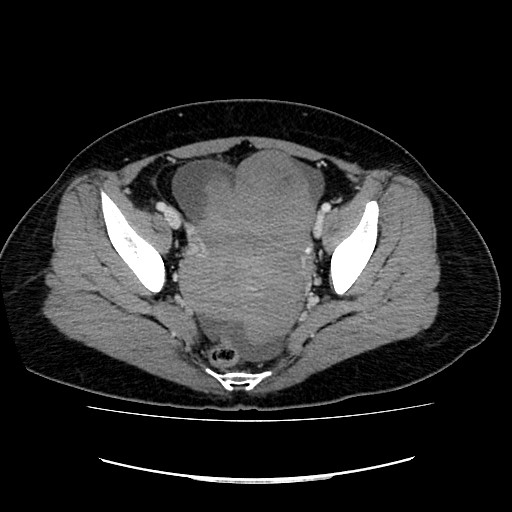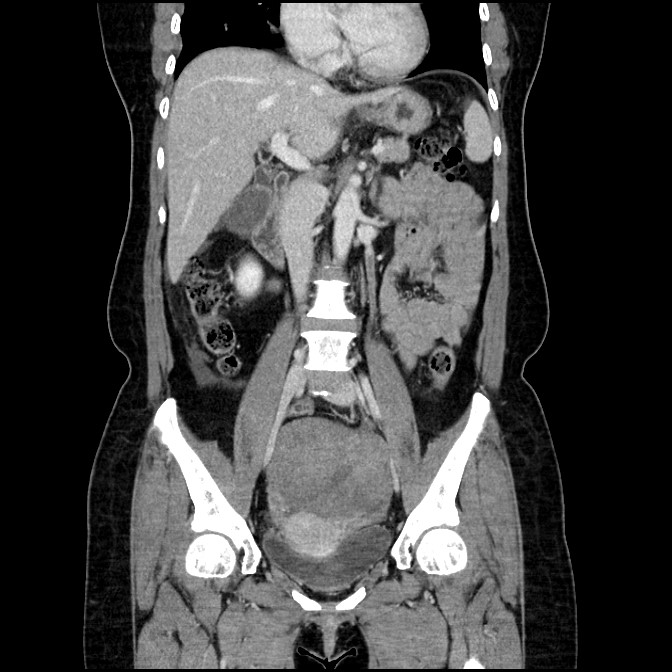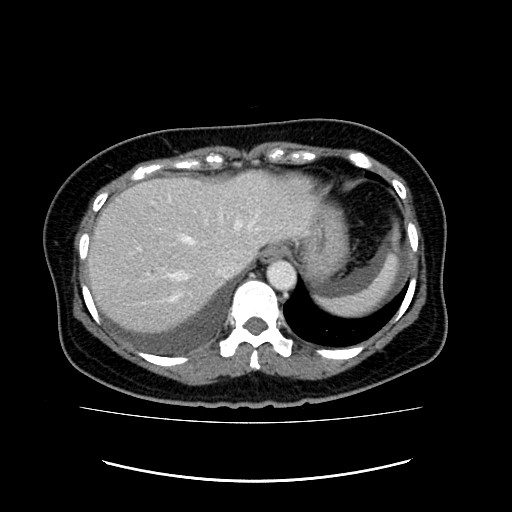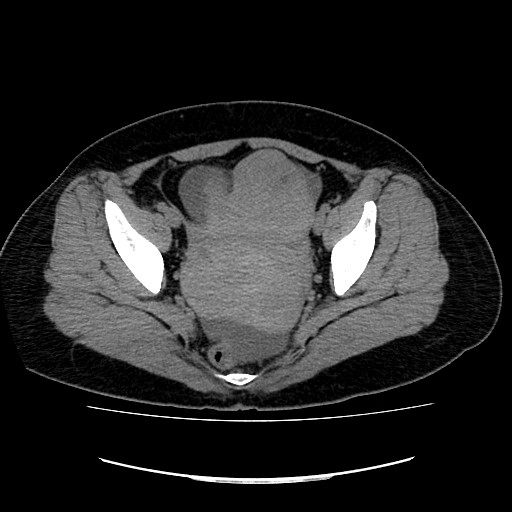Answer of October 2017
For completion of the online quiz, please visit the HKAM iCMECPD website: http://www.icmecpd.hk/
Clinical History:
This 51-year-old lady complained of lower abdominal pain and mass for half a year. There were no constitutional symptoms. She enjoyed unremarkable past health. Physical examination revealed a pelvic mass. CA-125 level was 87U/ml (reference <35U/ml). A contrast CT study was requested.
Figure 1. Pre-contrast axial CT at pelvic region

Figure 2. Post-contrast axial CT at pelvic region

Figure 3. Post-contrast coronal CT of the abdomen and pelvis

Figure 4. Post-contrast axial CT at the upper abdomen
Imaging Findings:
- A pelvic mass which shows poor contrast enhancement
- Ascites
- Right sided pleural effusion
- Presence of left ovarian vein thrombosis
Diagnosis:
Meigs syndrome due to underlying ovarian fibroma
Discussion:
This is a pathologically proven case of Meigs syndrome due to a left ovarian fibroma. Pleural effusion and ascites resolved on follow-up imaging after resection of the ovarian fibroma.
Meigs syndrome is defined as the presence of ascites and pleural effusion in association with a benign ovarian tumor. Fibromas are the most common tumors associated with Meigs syndrome. Other tumors include fibrothecomas, thecomas, granulosa cell tumors and Brenner tumors. At CT, ovarian fibromas manifest as diffuse, slightly hypoattenuating masses. Unlike most other solid masses, fibromas show poor, very slow contrast enhancement. Pleural effusion tends to be right sided in the majority of cases of Meigs syndrome. Pleural effusion and ascites can be transudative or exudative.
The term pseudo-Meigs syndrome refers to pleural effusion and ascites secondary to other pelvic or abdominal tumors. These benign tumors may include those of the fallopian tube or uterus, mature teratomas, or struma ovarii. It should be noted that pleural effusion, ascites, and pelvic mass can also be present in malignant diseases. It is therefore important to correlate with clinical and biochemical findings and carefully review imaging studies for evidence that may raise suspicion of underlying malignancy. CA-125 is a tumor marker for ovarian cancer. However, elevated CA-125 level can be found in a number of benign conditions. It can also be elevated in Meigs syndrome so elevated CA-125 alone cannot be used to make a specific diagnosis.
Although Meigs syndrome may mimic a malignant condition, it is a benign disease and has a very good prognosis. The ascites and pleural effusion usually disappear after the tumor is removed. Recurrence after surgical excision is rare.
